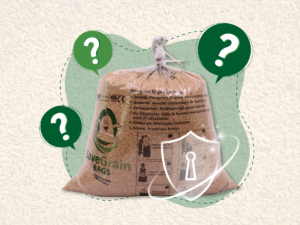
Food is one of the three basic needs for survival of all living organisms. Ever since man realized this, he began to store food in a way that prolongs its shelf life. Most households in India make bulk purchases of food, especially food grains such as rice, wheat, pulses, etc since that is both economical and convenient. This is the so called ‘ration‘ bought at the beginning of every month or week. Storing grains properly and safely at home ensures that they preserve their optimal nutritional value. Additionally, this prevents grain spoilage and food poisoning resulting from consumption.
How to store food grains at home properly?
A conscious effort needs to be made to store food grains at home in order to ensure a longer shelf life without compromising grain quality. Following factors should be taken care of:
Dry grains in the sun before storage
A traditional method of drying grains. It’s a good idea to dry food grains in the sun before storage. This rids the grains of any extra retained moisture and most insect eggs/larvae. After this, the grains are ready for storage.
Store in a clean, dry place.
Increased heat, humidity and moisture are the enemies of whole food grains. They can increase the chances of food getting spoilt as well as of fungal growth on the grains. To prevent this, choose a dry, cool, clean place to store the grains.
Protection from insects.
To ensure safe consumption of food, it’s necessary to prevent food contamination by household insects and rodents. Such contamination could cause large losses of food and makes the food unfit for human consumption. One way to prevent such damage and contamination is by spraying home use pesticides. By spraying such pesticides in the area before the food is going to be stored there and storing the food in a suitable container, not only will you detract the insects, but also avoid the direct effect of pesticides on the food grains.
However, pesticides tend to be poisonous and should be used with caution for family and children safety. Alternate solutions involving the use of tea tree oil or nimtree oil could also produce similar results.
Avoid use of wet spoons/hands.
At the time of taking out the grains for use, avoid the use of wet ladles or hands. This will reduce the risk of introducing moisture into the grains and reduce the risk of spoilage.
Store in freezer.
Some food grains such as split chickpeas (chana daal), yellow lentils (moong daal) are more susceptible to climate changes. They can be stored in the deep freezer in an air-tight container to protect them from unpredictable conditions.
Air-tight containers.
Use stainless steel air-tight containers or BPA free plastic air-tight containers for storing grains at home. Such containers protect grains from moisture as well as infestation.
While these storage containers are effective in protecting the grains, they can get costly. Storing grains in larger quantities may also pose as a limitation with these containers.
Preserving grains at home with hermetic technology
A suitable alternative to such containers is hermetic storage bags, which use hermetic technology. They provide an air-tight and moisture-tight barrier between the food grains and the outer environment, protecting grains from humidity and contamination by insects. Furthermore, hermetic bags are environment friendly (recyclable), affordable, convenient to use at home, too, and can accommodate large quantities of food grain for storage.
Save Grain Bags provides these hermetic storage bags, which are as ideal for storing food grains at home as they are for storing grains at the farms.





